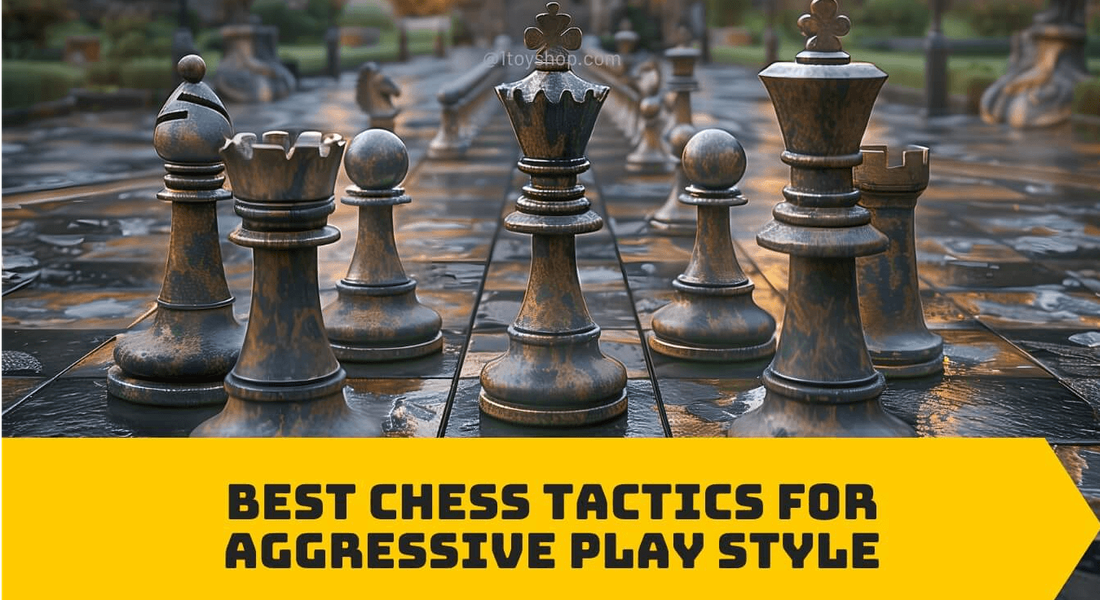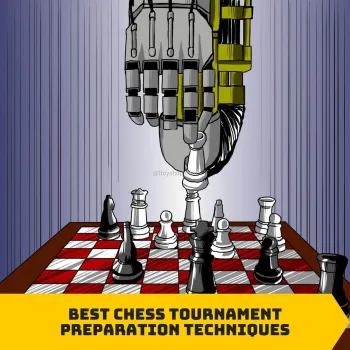
To Get More Wonderful Toys And Take Discount Today. Click On The Image.
This blog post will explore some of the best chess tactics for those who prefer a more assertive approach to the game. Whether you're a beginner looking to spice up your gameplay or an experienced player seeking to refine your aggressive tactics, this guide will provide valuable insights to enhance your chess prowess.
Understanding Aggressive Chess Play
Aggressive chess is characterized by bold moves, calculated risks, and a proactive approach to controlling the board. Rather than waiting for opportunities to arise, aggressive players create them. This style of play often involves sacrificing pieces for positional advantages, launching early attacks, and maintaining constant pressure on the opponent.
The Psychology Behind Aggression in Chess
An aggressive play style can be psychologically advantageous. It can:
Put your opponent on the defensive
Create time pressure for your opponent
Force mistakes due to increased stress
However, it's crucial to balance aggression with sound strategic thinking. Reckless attacks without proper support can quickly backfire.
Key Tactics for Aggressive Chess Play
1. The King's Gambit
The King's Gambit is a classic aggressive opening for white. It begins with:
e4 e5
f4
This move immediately challenges black's central pawn and opens up lines for white's pieces. While it exposes white's king somewhat, it also creates opportunities for rapid development and early attacks.
2. The Sicilian Defense (for Black)
For black, the Sicilian Defense is a highly aggressive response to white's e4 opening:
e4 c5
This move immediately contests the center and sets up an asymmetrical pawn structure, leading to complex and often aggressive play.
3. The Greek Gift Sacrifice
This tactic involves sacrificing a bishop to expose the opponent's king:
Typically occurs when the opponent has castled kingside
The attacking player sacrifices their light-squared bishop on h7 (or h2 for black)
Often followed by a queen check and further piece sacrifices
When executed correctly, this can lead to a devastating attack.
4. The Fried Liver Attack
This aggressive opening in the Two Knights Defense can catch unprepared opponents off guard:
e4 e5
Nf3 Nc6
Bc4 Nf6
Ng5 d5
exd5 Nxd5
Nxf7
This sequence aims to exploit black's weakened kingside after the early development of the knight to f6.
Advanced Aggressive Tactics
1. Piece Sacrifices for Initiative
In aggressive chess, sacrificing material for positional advantages or attacking opportunities is common. Key principles include:
Ensure the sacrifice leads to concrete advantages
Calculate variations thoroughly before committing
Maintain pressure after the sacrifice to prevent your opponent from consolidating
2. Pawn Storms
A pawn storm involves advancing multiple pawns to weaken the opponent's king's position. This tactic:
Is often used against a castled king
Can open lines for your pieces to attack
Requires careful timing and support from other pieces
3. Zwischenzug (Intermediate Move)
This tactic involves making an unexpected move in the middle of a seemingly forced sequence. It can:
Improve your position before completing an expected exchange
Create tactical possibilities that weren't initially apparent
Psychologically disrupt your opponent's thought process
Implementing Aggressive Tactics Effectively
While aggressive play can be highly effective, it's crucial to approach it with caution and preparation. Here are some tips for implementing aggressive tactics successfully:
Study Classic Games: Analyze games by aggressive players like Mikhail Tal or Garry Kasparov to understand how they balance aggression with sound positional play.
Practice Calculation: Aggressive play often requires precise calculation. Regular practice with chess puzzles can sharpen this skill.
Develop Your Pieces Quickly: Rapid development is crucial for maintaining the initiative in aggressive play.
Stay Flexible: Be prepared to switch to a more defensive stance if your opponent successfully repels your attack.
Know Your Opponent: If possible, study your opponent's past games to identify weaknesses in their defensive play.
"The best defense is a good offense." - This adage holds particularly true in aggressive chess play.
Potential Pitfalls of Aggressive Chess
While an aggressive style can be highly effective, it's not without risks. Common pitfalls include:
Overextending your position
Neglecting defensive responsibilities
Running out of steam if the initial attack fails
To mitigate these risks, always ensure your aggressive moves are backed by sound positional play and maintain a balance between attack and defense.
Conclusion
Mastering aggressive chess tactics can significantly enhance your gameplay and make you a more formidable opponent. From classic openings like the King's Gambit to advanced tactics like piece sacrifices and pawn storms, there's a wealth of aggressive strategies to explore and incorporate into your play.
Remember, the key to successful aggressive chess is not just about making bold moves, but about calculating accurately, maintaining pressure, and being ready to adapt your strategy as the game evolves. With practice and study, you can develop a potent aggressive style that keeps your opponents on their toes and leads you to more victories on the chessboard.
Whether you're playing in local tournaments or casual games with friends, these aggressive tactics will add an exciting dimension to your chess repertoire. So, set up your board, start practicing these tactics, and get ready to take your chess game to the next level!
Source: Team 1ToyShop (1.T.S) compiled, analyzed and wrote.

Chess Toys For Kindergarteners: Introducing Strategic Thinking And Social Skills
Author name
16.05.2024
Has your little one ever shown a spark of interest when you're pondering over the chessboard? Believe it or not, the ancient game of chess isn't just for adults and older kids. In fact, with the right approach, kindergarteners can get in on the fun too!

Best Chess Tournament Preparation Techniques
Author name
23.07.2024
Winning Strategies: Preparing for Chess Tournaments Like a Pro

Best Chess Study Methods For Memory Retention
Author name
23.07.2024
Mastering Chess: Effective Study Methods for Long-Term Memory Retention
